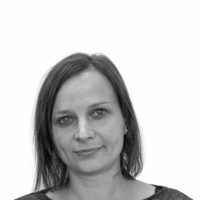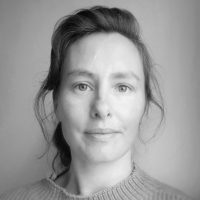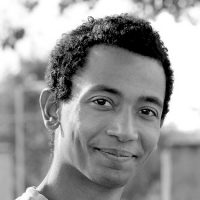
iNNO SED

- Title:
-
iNNO SED – iNNOvative SEDiment management in the Danube River Basin
- Start Date:
-
September 2024
- End Date:
-
August 2029
- Funding Body:
-
Horizon Europe
- Coordinator:
-
Budapest University of Technology and Economics
- Project Partners:
-
Budapesti Muszaki es Gazdasagtudomanyi Egyetem (BME), Universitaet Fuer Bodenkultur Wien (BOKU), Global Water Partnership Central and Eastern Europe (GWP CEE), University College Cork – National University of Ireland, Cork (UCC), Hrvatski Geoloski Institut (HGI), Geoloski Zavod Slovenije (GeoZS), Sveuciliste U Zagrebu Gradevinski Fakultet (UNIZAG), Orszagos Vizugyi Foigazgatosag (OVF), Wwf Vilag Termeszeti Alap Magyarorszag Alapitvany (WWF HU), Consiglio Nazionale Delle Ricerche (CNR), Vyskumny Ustav Vodneho Hospodarstva (VUVH), Institut Za Vodoprivredu Jaroslav Cerni Ad (JCWI), Institutul National De Cercetare-Dezvoltare Pentru Geologie Si Geoecologie Marina-Geoecomar (GeoEcoMar), Ferenc Rakoczi Ii Transcarpathian Hungarian College Of Higher Education (THC), Geologicheski Institut Pri Ban St.Dimitrov (GI-BAS), Lew Wasserkraft Gmbh (LEW), Technische Universitaet Muenchen (TUM), Cesky Hydrometeorologicky Ustav (CHMI), Regia Autonoma Administratia Fluviala A Dunarii De Jos Galati (AFDJ), Aqua-Terra Lab Kemiai Kereskedelmi Gyarto Es Szolgaltato Kft (Aqua), Universitatea De Stat Din Moldova (MSU), Via Donau Osterreichische Wasserstrassen Gesellschaft Mbh (VIADONAU), Zentrum Fur Soziale Innovation Gmbh (ZSI)
- Research Area:
- Website
Introduction
The Danube River Basin faces significant challenges associated with river sediments. In the 2021 update of the Danube River Basin Management Plan, sediment balance alteration emerged as a new sub-topic within the existing Significant Water Management Issue titled “Hydromorphological alterations”. Additionally, sectors like industry, urban sewage, and agriculture call for sediment quality evaluations throughout the Danube River Basin. However, the absence of standard sediment monitoring limits our understanding of risks. iNNO SED will represent a pioneering approach to sediment management in large international river basins, utilising an approach that sets an example for other major global river systems like the Amazon, Mekong, or Niger. In doing so, it aligns with the Mission’s objective of intensifying the European Union’s competitiveness.
Aim
Addressing the sediment mismanagement in the DRB, the iNNO SED project aims to establish the Danube Sediment ‘Lighthouse’ Knowledge Centre. This centre will:
- Introduce a set of innovative methods for monitoring and modelling sediment quantity and quality, thereby deepening our knowledge of sediment processes.
- Provide innovative sediment management practices to improve sediment continuity and quality in DRB sections facing with sediment-related issues.
- Showcase co-created innovative measures through demonstration activities, while also evaluating their socio-economic and environmental aspects.
- Empower the public with innovative knowledge transfer methodologies.
- Collaborate with five Associated Regions, transferring the iNNO SED solutions to other river basins.
To accomplish these goals, iNNO SED will leverage the achievements and key contributors of the DanubeSediment and SIMONA initiatives. Moreover, it will engage relevant stakeholders of sediment management, such as ICPDR, policy makers, river managers, hydropower plant managers, waterway authorities, national parks, environmental agencies, SMEs, and more.
Work Packages
WP1- Sediment Knowledge System: Improved Process Understanding (Lead: JCWI)
The overall objective of WP1 is to improve sediment quantity and quality process understanding over the river-sea system that has led to the emergence of the new integrated sediment management paradigm and provide the baseline content for the Sediment Lighthouse (WP5). Specific objectives of this WP are:
- Analyse existing sediment management practices for the Danube River Basin.
- Evaluate state-of-the-art sediment quantity and quality monitoring and modelling methods.
- Improve understanding of the relationship between sediment quantity and quality.
- Develop and test innovative monitoring methods.
- Establish an innovative integrated modelling framework for sediment quantity and quality.
WP2 – Strengthening the Basin-River-Sea Connections on Sediment Quality and Quantity (Lead: BOKU)
The objectives of WP2 are:
- To identify sediment hotpots along the Danube River Basin.
- Further develop innovative sediment management solutions that can improve sediment continuity and quality in problematic river sections and mitigate erosion processes along incised stretches and test them.
- To work out a support system and visualisation platform for integrated sediment management.
WP3 – Socio-economic and Environmental Effects of Sustainable and Long-term Integrated Sediment Management (Lead: WWF HU)
The objectives of WP3 are:
- To assess the social, economic, and environmental aspects of the long-term integrated sediment management focusing on policy and cost-benefit ingredients.
- To develop recommendations on how the core and wider group of stakeholders’ aspects need to be considered during the selection of the sediment management measures.
- To identify key stakeholders of sediment management related topics (on Danube basin and pilot level), and to improve communication.
- To compile deep demonstration site analysis to identify conflicts and win-win solutions and to make recommendations on feasible scenarios for sustainable sediment management.
WP4 – Demonstrated Sediment Management Solutions (Lead: GeoCoMar)
WP4 will co-create together with the local communities and citizens within the Demonstration Sites, the optimal sediment measures, based on the findings of WP1-WP3, to support the sediment management at river basin scale, including solutions for the restoration of sediment balance, reduction of chemicals and organic pollutants, in the Danube River – Black Sea system. Specific objectives are:
- To implement, monitor and demonstrate the efficiency of sediment management measures along 8 Demonstration Actions, to develop long-term solutions, based on the innovative tools and methods identified and developed in WP1 and WP2.
- To develop and implement a participatory process working closely with local citizens within the Demonstration Actions, based on WP3 outputs.
WP5 – Danube Sediment ‘Lighthouse’ Knowledge Centre (Lead: BME)
The objectives of WP5 are:
- To upscale innovative sediment solutions to Danube River Basin supported by a Sediment Management Toolbox.
- To replicate solutions in Associated Regions.
- To empower citizens and educate experts in sediment management.
WP6 – Project Management (Lead: BME)
The objectives of WP6 are:
- To ensure timely execution of project activities, finalisation of deliverables and their quality.
- To implement financial and administrative management.
WP7 – Communication, Dissemination & Exploitation (Lead: MaREI, , UCC)
The objectives of WP7 are:
- To communicate the project findings and activities and disseminate project results; and to increase appreciation of our fresh and transitional water ecosystems and associated marine biodiversity.
- To raise awareness of the concerns associated with Danube sediment quantity and quality and associated wider impact on biodiversity and local communities; and to share such information with project audiences and stakeholders using a variety of tools and strategies.
- To work in close collaboration with project partners ensuring project communication is scientifically correct and to utilize the appropriate means to reach intended audiences and project stakeholders.
- To develop and use project-specific targeted dissemination approaches ensuring project information is distributed to, and understood by, experts in the field as well as non-experts.
- To engage key project stakeholders in support of (and in tandem with) project partners to develop stakeholder-specific project outputs and ensure the uptake and use of developed and tested projects outputs.
Contact
Name: Kathrin Kopke | Email: ei.ccu@ekpok.k







